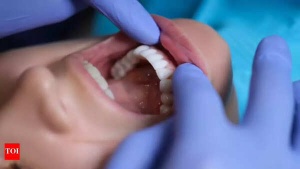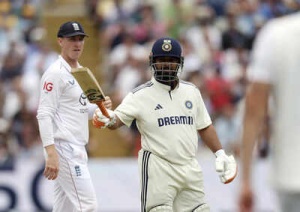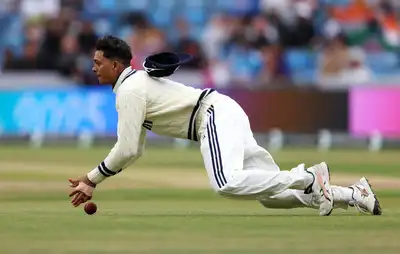A sudden red patch on the white of the eye can look dramatic and cause understandable concern. In most cases, this is caused by a subconjunctival haemorrhage, a small bleed beneath the clear surface of the eye. It is usually harmless, painless, and clears up on its own within one to two weeks. While it often occurs without an obvious trigger, common causes include coughing, sneezing, eye rubbing, minor injury, or contact lens use.
According to a study published in Clinical Ophthalmology, subconjunctival haemorrhage is typically benign in younger individuals, where local factors are the main cause. In older adults, however, systemic vascular conditions such as high blood pressure, diabetes, and arteriosclerosis are more commonly involved. The study also highlights that if the haemorrhage is recurrent or slow to resolve. Though usually mild, persistent cases should not be ignored.
What is a subconjunctival haemorrhage
A subconjunctival haemorrhage occurs when a small blood vessel breaks underneath the conjunctiva, the clear tissue that covers the white part of your eye. The conjunctiva doesn’t absorb blood quickly, so the blood gets trapped and appears as a bright red patch on the white of the eye (sclera).
It might look like something from a horror film, but it’s usually painless, doesn’t affect your vision, and often clears up on its own within two weeks. In many cases, people don’t even realise it’s there until they see it in the mirror.
Symptoms of subconjunctival haemorrhage to watch for
The main symptom of a subconjunctival haemorrhage is a bright red or dark red patch on the white of the eye. Other common features include:
- No pain or discomfort
- No change in vision
- A mild scratchy or gritty feeling in the eye
- No discharge or swelling
There is usually no sign of injury or trauma to the surrounding area.
What causes blood in the eyes
Subconjunctival haemorrhages are often triggered by a sudden increase in pressure in the blood vessels. Common causes include:
- Sneezing or coughing
- Vomiting
- Straining during lifting or using the toilet
- Rubbing your eyes vigorously
- Minor eye trauma or injury
- Contact lens irritation
- Sudden pressure changes in the head or chest
Sometimes, there’s no clear cause at all. These cases are called idiopathic, and they’re quite common.
Who’s at risk
While anyone can experience a burst blood vessel in the eye, certain factors can increase the likelihood:
- High blood pressure: Increased pressure can weaken blood vessels in the eye, making them more prone to breaking.
- Diabetes: Elevated blood sugar levels can damage blood vessels over time, increasing the risk of haemorrhage.
- Older age (especially over 65): Ageing naturally leads to more fragile blood vessels, which are more susceptible to rupture.
- Blood-thinning medications: These reduce the blood’s ability to clot, making even minor vessel breaks more noticeable.
- Blood-clotting disorders: Conditions that affect normal clotting can cause longer-lasting or more frequent eye bleeds.
- Improper contact lens use or hygiene: Poor lens care can irritate or injure the eye’s surface, increasing the risk of vessel rupture.
Maintaining good overall health and managing chronic conditions can help lower your risk.
Is blood in the eye dangerous
In the vast majority of cases, a subconjunctival haemorrhage is harmless. It doesn't affect the eye's structure or function and heals naturally over time.
However, if the haemorrhage occurs repeatedly or is accompanied by other symptoms, it could be a sign of an underlying health issue, such as high blood pressure or a clotting disorder.
How long does it last
Most cases resolve within 7 to 14 days, similar to how a bruise fades on the skin. The redness may change colour, turning yellow or orange, before fully disappearing.
Treatment and home care
No medical treatment is typically required. However, you can support healing and relieve minor irritation with:
- Lubricating eye drops (artificial tears)
- Avoiding rubbing the eye
- Resting the eyes from screens and bright light if they feel strained
- Wearing sunglasses for comfort in bright conditions
There’s no need to avoid everyday activities unless your eye is feeling particularly irritated.
When should you see a doctor
While most cases are harmless, seek medical advice if:
- The red patch doesn’t fade within 2–3 weeks
- You experience pain, swelling, or discharge
- There are changes in vision such as blurriness or light sensitivity
- The bleeding is recurring or happens frequently
- You are taking blood thinners or have a clotting disorder
- These could point to a more serious issue that needs investigation.
Prevention tips
You can’t always prevent a burst blood vessel in the eye, but some simple steps can reduce your risk:
- Manage high blood pressure and diabetes effectively
- Avoid straining during physical activities or while on the toilet
- Use contact lenses correctly, with proper hygiene and handling
- Avoid rubbing your eyes
What causes oral cancer: Key risk factors you should know
 Gavaskar Calls for Kuldeep Yadav's Inclusion in Second Test Amid Bumrah Fitness Concerns
Gavaskar Calls for Kuldeep Yadav's Inclusion in Second Test Amid Bumrah Fitness Concerns
 Early Warning Signs: 5 Heart Attack Symptoms to Watch Out For a Month in Advance
Early Warning Signs: 5 Heart Attack Symptoms to Watch Out For a Month in Advance
 Oral Cancer: Spot the Signs, Understand the Risks, and Why Early Detection is Key
Oral Cancer: Spot the Signs, Understand the Risks, and Why Early Detection is Key
 Rishabh Pant's Composed Reply Deflates Harry Brook's Sledge in Edgbaston Test: Watch Key Moments
Rishabh Pant's Composed Reply Deflates Harry Brook's Sledge in Edgbaston Test: Watch Key Moments
 Rohit Sharma Credits Barbados as India's Lucky Ground After T20 World Cup Triumph
Rohit Sharma Credits Barbados as India's Lucky Ground After T20 World Cup Triumph
 Jaiswal Aims to Eclipse Gavaskar's 49-Year-Old Record in Edgbaston Test Showdown
Jaiswal Aims to Eclipse Gavaskar's 49-Year-Old Record in Edgbaston Test Showdown
 FIFA Club World Cup 2025: Upsets, Messi Magic, and 2026 World Cup Concerns Emerge From Group Stage
FIFA Club World Cup 2025: Upsets, Messi Magic, and 2026 World Cup Concerns Emerge From Group Stage
 Science-Backed: Simple Habits for a Stronger Heart, According to Experts
Science-Backed: Simple Habits for a Stronger Heart, According to Experts
 Prithvi Shaw Admits to Missteps, Lost Focus Amid Career Setbacks
Prithvi Shaw Admits to Missteps, Lost Focus Amid Career Setbacks
 India's Fielding Failures Under Scrutiny After First Test Defeat to England: Former Selector критикует Dropped Catches
India's Fielding Failures Under Scrutiny After First Test Defeat to England: Former Selector критикует Dropped Catches